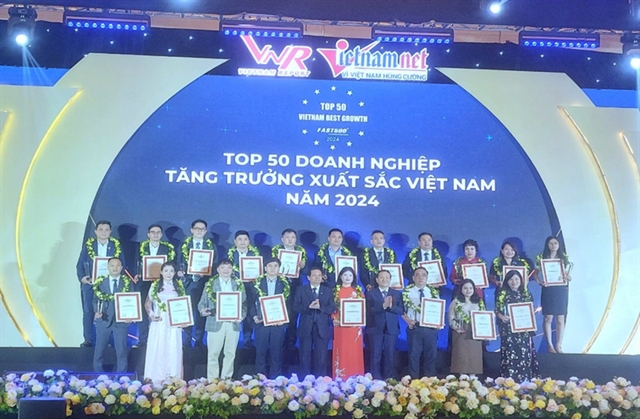 Media-OutReach Newswire
Media-OutReach Newswire

SINGAPORE - Media OutReach - April 3, 2019 - A Frost & Sullivan study commissioned by Microsoft foundthat a cyberattack can cost a large manufacturing organization in Asia Pacifican average of US$10.7 million in economic loss with customer churn beingthe largest economic consequence of a cyber breach, resulting in US$8.1 millionof indirect cost. For mid-sized manufacturing organization,the average economic loss was US$38,000. Furthermore, cybersecurityincidents have also led to job losses across different functions in more thanthree out of five (63%) manufacturing organizations.
While the impact of datavulnerabilities and breaches can be costly and damaging to the manufacturing organizations, its supply chain and consumers, the study uncovered thathalf (51%) of the manufacturing organizations in Asia Pacific had eitherexperienced a security incident or were not sure if they had had a securityincident as they had not performed proper forensics or data breach assessment.
The study further revealed that instead of accelerating digitaltransformation to bolster their cybersecurity strategyto defend against future cyberattacks, almost three in five (59%) manufacturingorganizations across Asia Pacific had delayed the progress of digitaltransformation projects due to the fear of cyberattacks. Delaying digitaltransformation not only limits the capabilities of manufacturing organizationsto defend against increasingly sophisticated cyberthreats but also preventsthem from leveraging advanced technologies, such as artificial intelligence(AI), cloud, and the Internet of Things (IoT), to dramatically increaseproductivity, empower their workforce and deliver new service lines.
These findings are part of "Understandingthe Cybersecurity Threat Landscape in Asia Pacific: Securing the ModernEnterprise in a Digital World" study launched in May 2018. Thefindings aim to provide business and IT decision makers in the manufacturing sectorwith insights on the economic cost of cyberattacks and to help to identify anygaps in their cybersecurity strategies.
The initial study surveyed a total of 1,300 business and IT decisionmakers ranging from mid-sized organizations (250 to 499 employees) tolarge-sized organizations (>than 500 employees), of which 18% belong to the manufacturingindustry.
In calculating the cost of cyberattacks, Frost & Sullivan created aneconomic loss model based on the insights shared by the respondents. This modelfactors in two kinds of losses which could result from a cybersecurity breach:

"The frequency andseverity of cyberattacks targeting manufacturing organizations have increased significantlyin recent years, underscoring the need to protect the ever-growing volume ofdata generated by and made available to manufacturing organizations," said Kenny Yeo,Industry Principal, Cyber Security, Frost & Sullivan. "By integrating securityinto every digital process and physical devices, manufacturing organizationscan not only mitigate the loss of intellectual property (IP) and customer databut also minimize downtime as well as remediation cost resulting fromcyberattacks."
Key Cyberthreats and Gaps in ManufacturingOrganizations' Cybersecurity Approaches
For manufacturing organizations that have encountered a security incident, data exfiltration, ransomware and remote code execution are the biggest concern as these threats have the highest impact and often result in the slowest recovery time:
Aside from externalthreats, the study also uncovered several key cybersecurity gaps inmanufacturing organizations:
The study revealed that only 26% of manufacturingorganizations who had encountered cyberthreats considered a cybersecuritystrategy prior to initiating a digital transformation project. The remainingrespondents either thought about cybersecurity only after the commencement of theirdigital transformation projects or did not think about cybersecurity at all.
"Technology advancesand innovations in intelligent manufacturing are delivering game-changingbreakthroughs for leading businesses in every sector," said Scott Hunter,Regional Business Lead, Manufacturing, Microsoft Asia. "As manufacturingorganizations focus on increasing data-driven products and services todifferentiate themselves in the global economy, building and maintaining trustwithin their ecosystem of partners and customers becomes an even biggerpriority."
"Cyber attackers areconstantly looking for opportunities, so the more businesses know about theirtechniques and tradecraft, the better prepared they will be to build defenses andrespond quickly. Building organizational resilience and reducing risk byadopting a security approach that includes prevention, detection and responsecan make a huge difference in the overall cybersecurity health of amanufacturing organization," he added.
Bolstering Cybersecurity UsingArtifical Intelligence
AI plays a criticalrole in manufacturing organizations as they increasingly rely on machinelearning automation to increase their efficiency and output by scale whilereducing cost and downtime through predictive maintenance. AI is also apowerful tool that can enable manufacturing organizations to defend themselvesagainst increasingly sophisticated cyberattacks. The study revealed that 67% ofmanufacturing organizations in Asia Pacific have either adopted or areconsidering an AI-based approach to improve their security posture.
Cybersecurity solutions that are augmented withAI and machine learning capabilities can autonomously learn what is normalbehavior for connected devices on the organization's network, and swiftlyidentify cyberthreats at scale through the detection of behavioral anomalies.Cybersecurity teams can also put in place rules that block or quarantinedevices that are not behaving as expected before they can potentially damagethe environment. These AI-powered cybersecurity engines enable manufacturingorganizations to address one of their largest and most complex security challengesas they integrate thousands or even millions of IoT devices into theirinformation technology (IT) and operational technology (OT) environments.
For more informationon the study, please visit: https://news.microsoft.com/apac/features/cybersecurity-in-asia/
This study involved a survey conducted with 1,300 respondents from 13markets - Australia, China, Hong Kong, Indonesia, India, Japan, Korea,Malaysia, New Zealand, Philippines, Singapore, Taiwan and Thailand. Out ofthese 1,300 respondents, 18% of them are from the manufacturing industry.
All respondents are business and IT decision-makers involved in shapingtheir organizations' cybersecurity strategies. 44% of them being businessdecision-makers, including CEOs, COOs and Directors, while 56% are ITdecision-makers, including CIOs, CISO and IT Directors. 29% of participants arefrom mid-sized organizations (250 to 499 staff); and 71% are from large-sizedorganizations (more than 500 staff).
Microsoft (Nasdaq"MSFT" @microsoft) enables digital transformation for the era of an intelligentcloud and an intelligent edge. Its mission is to empower every person and everyorganization on the planet to achieve more.









